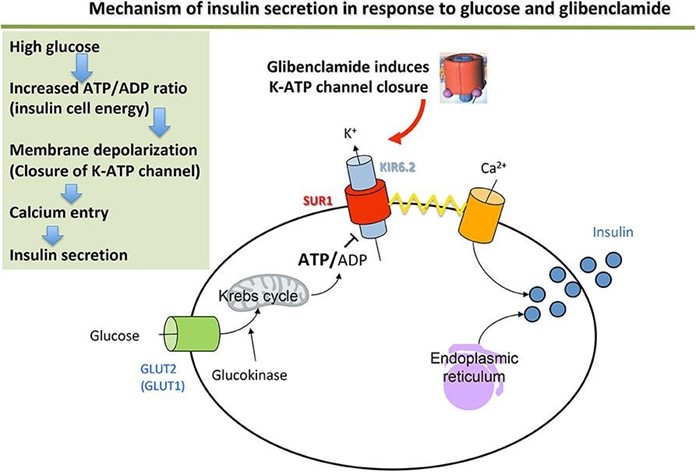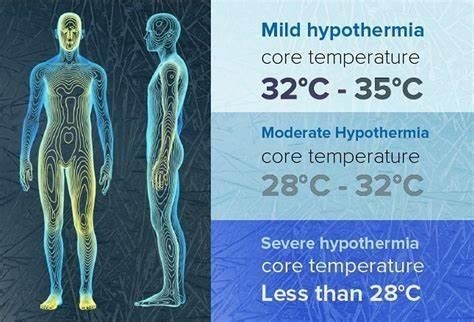Four hours after delivery of a healthy neonate of an insulin-dependent diabetic woman, the baby appears jittery, irritable, and has a high-pitched cry. Which nursing action has top priority?
Document the event in the nurses' notes.
Test for blood glucose level.
Notify the clinician stat.
Start an intravenous line with D5W.
The Correct Answer is B
Choice a) Document the event in the nurses' notes is incorrect because this is not a priority action for a neonate who is showing signs of hypoglycemia. Hypoglycemia is a condition where the blood glucose level is lower than normal, which can cause neurological and metabolic problems in newborns. Neonates of diabetic mothers are at higher risk of developing hypoglycemia due to increased insulin production and decreased glycogen stores.
Documenting the event in the nurses' notes is an important step, but it should be done after assessing and treating the neonate's condition.
Choice b) Test for blood glucose level is correct because this is the most important action for a neonate who is exhibiting symptoms of hypoglycemia. The nurse should use a heel stick or a cord blood sample to measure the blood glucose level of the neonate as soon as possible, as hypoglycemia can lead to serious complications such as seizures, coma, brain damage, or death if left untreated. The normal blood glucose range for a full-term neonate is 40 to 60 mg/dL in the first hour of life, and 50 to 90 mg/dL thereafter. A blood glucose level below 40 mg/dL indicates hypoglycemia and requires immediate intervention.
Choice c) Notify the clinician stat is incorrect because this is not the most urgent action for a neonate who is suffering from hypoglycemia. The nurse should notify the clinician after confirming the diagnosis of hypoglycemia and initiating treatment, such as feeding or administering intravenous glucose. The clinician may order further tests or treatments depending on the severity and cause of the hypoglycemia, but the nurse should not delay the initial management of the neonate's condition.
Choice d) Start an intravenous line with D5W is incorrect because this is not the first-line treatment for a neonate who has hypoglycemia. D5W stands for dextrose 5% in water, which is a solution that contains glucose and water. It can be used to treat hypoglycemia by providing a source of energy and fluid to the neonate. However, before starting an intravenous line with D5W, the nurse should first attempt to feed the neonate with breast milk or formula, as this can also raise the blood glucose level and provide other nutrients and antibodies. If feeding is unsuccessful or contraindicated, then the nurse should start an intravenous line with D5W as ordered by the clinician.

Nursing Test Bank
Naxlex Comprehensive Predictor Exams
Related Questions
Correct Answer is D
Explanation
Choice A: This is incorrect because pointing out how lucky she is to have a healthy baby may invalidate her feelings and make her feel guilty or ashamed. The nurse should acknowledge and respect the client's emotions and avoid making judgments or comparisons.
Choice B: This is incorrect because assessing her for pain is not the first action that the nurse should take. Although pain may be a factor that contributes to the client's emotional state, it is not the primary cause of her crying. The nurse should first establish rapport and trust with the client and then assess her physical and psychological needs.
Choice C: This is incorrect because explaining that she is experiencing postpartum blues may be premature and inaccurate. Postpartum blues are mild and transient mood changes that occur in up to 80% of women within the first few days after childbirth. They are characterized by tearfulness, irritability, anxiety, and mood swings. However, the nurse should not assume that the client has postpartum blues without performing a thorough assessment and ruling out other possible causes of her crying, such as postpartum depression, anxiety, or trauma.
Choice D: This is the correct answer because allowing her time to express her feelings is the most appropriate and empathetic action that the nurse should take first. The nurse should listen actively and attentively to the client and provide emotional support and reassurance. The nurse should also use open-ended questions and reflective statements to facilitate communication and explore the client's concerns and coping strategies.
Correct Answer is D
Explanation
Choice A) Decreased metabolic rate is incorrect because this is not a result of hypothermia in the newborn, but rather a cause of it. Metabolic rate is the speed at which the body uses energy to perform its functions. Newborns have a high metabolic rate, which helps them to maintain a normal body temperature of 36.5°C to 37.5°C (97.7°F to 99.5°F). However, some factors can lower the metabolic rate of newborns, such as prematurity, low birth weight, infection, or hypoglycemia. A low metabolic rate can make the newborn more susceptible to heat loss and hypothermia, which is a condition that occurs when the body temperature drops below 36°C (96.8°F). Therefore, this response is inaccurate and misleading.
Choice B) Decreased oxygen demands is incorrect because this is not a result of hypothermia in the newborn, but rather a consequence of it. Oxygen demand is the amount of oxygen that the body needs to function properly.
Newborns have a high oxygen demand, which helps them to support their growth and development. However, some factors can decrease the oxygen demand of newborns, such as hypothermia, sedation, or asphyxia. A low oxygen demand can impair the oxygen delivery and utilization by the tissues and organs, leading to hypoxia, acidosis, or organ failure. Therefore, this response is irrelevant and inaccurate.
Choice C) Shivering to generate heat is incorrect because this is not a result of hypothermia in the newborn, but rather a mechanism that is absent in them. Shivering is an involuntary contraction of the muscles that produces heat and raises the body temperature. It is a common response to cold exposure in adults and older children, but not in newborns. Newborns do not have the ability to shiver, as their muscles are immature and lack glycogen stores.
Instead, they rely on other methods to generate heat, such as non-shivering thermogenesis, which involves burning brown fat in certain areas of the body. Therefore, this response is irrelevant and inaccurate.
Choice D) Increased glucose demands is correct because this is a result of hypothermia in the newborn that can cause complications. Glucose demand is the amount of glucose that the body needs to produce energy and maintain its functions. Newborns have a high glucose demand, which helps them to support their metabolic rate and thermoregulation. However, some factors can increase the glucose demand of newborns, such as hypothermia, stress, or infection. A high glucose demand can deplete the glucose stores and cause hypoglycemia, which is a low level of glucose in the blood that can lead to seizures, brain damage, or death. Therefore, this response is clear and accurate.

Whether you are a student looking to ace your exams or a practicing nurse seeking to enhance your expertise , our nursing education contents will empower you with the confidence and competence to make a difference in the lives of patients and become a respected leader in the healthcare field.
Visit Naxlex, invest in your future and unlock endless possibilities with our unparalleled nursing education contents today
Report Wrong Answer on the Current Question
Do you disagree with the answer? If yes, what is your expected answer? Explain.
Kindly be descriptive with the issue you are facing.
